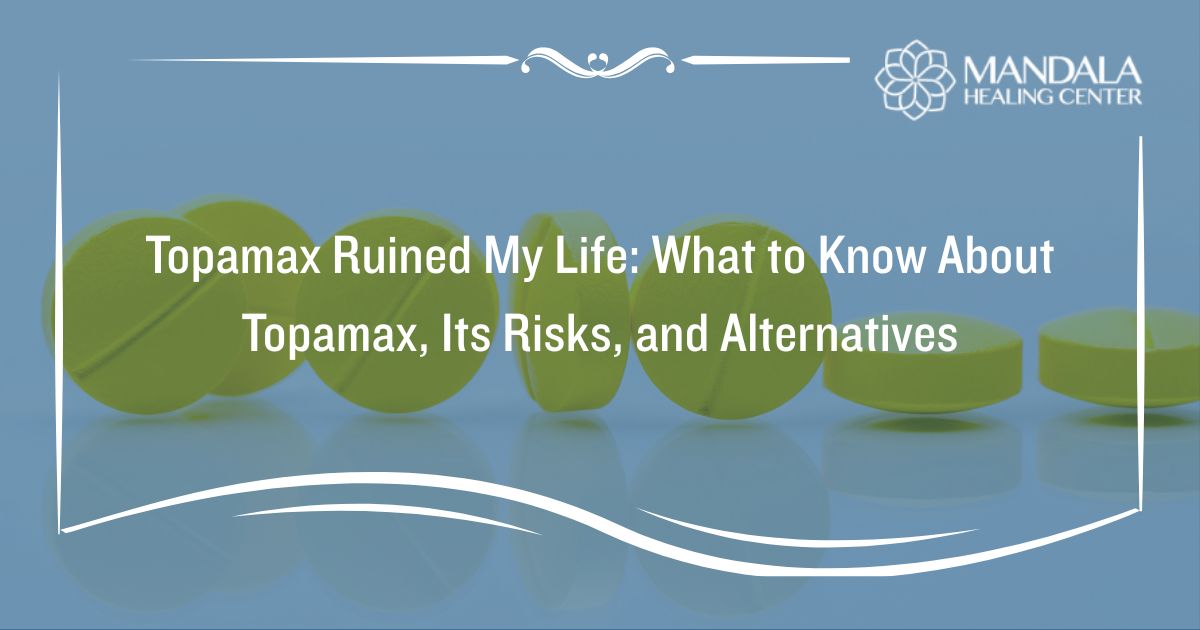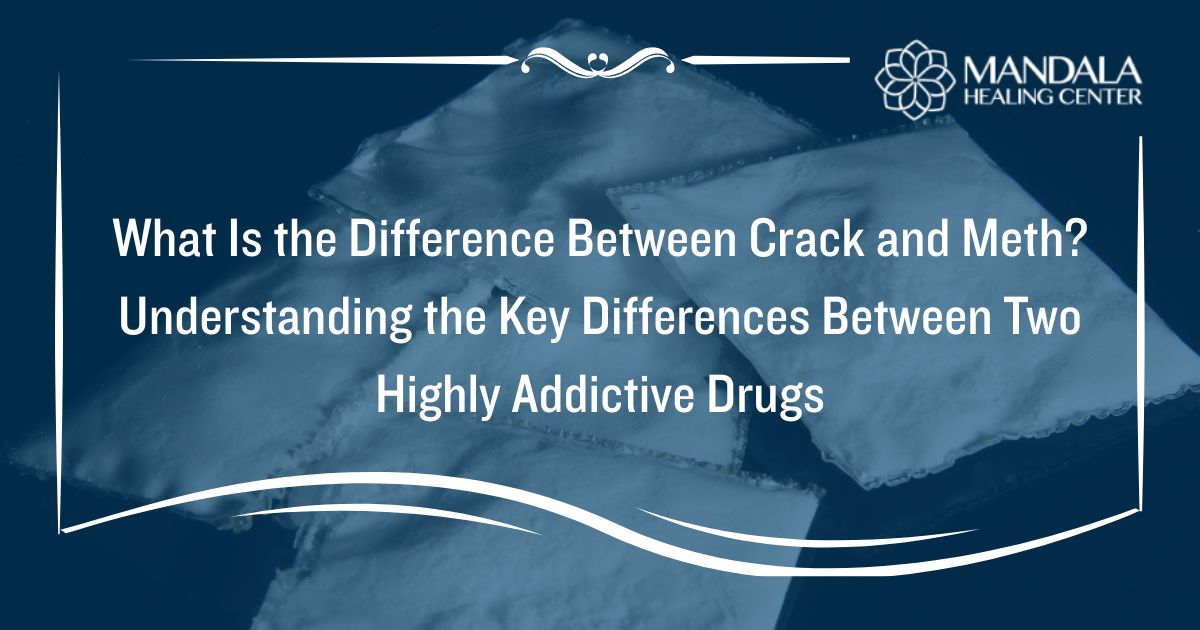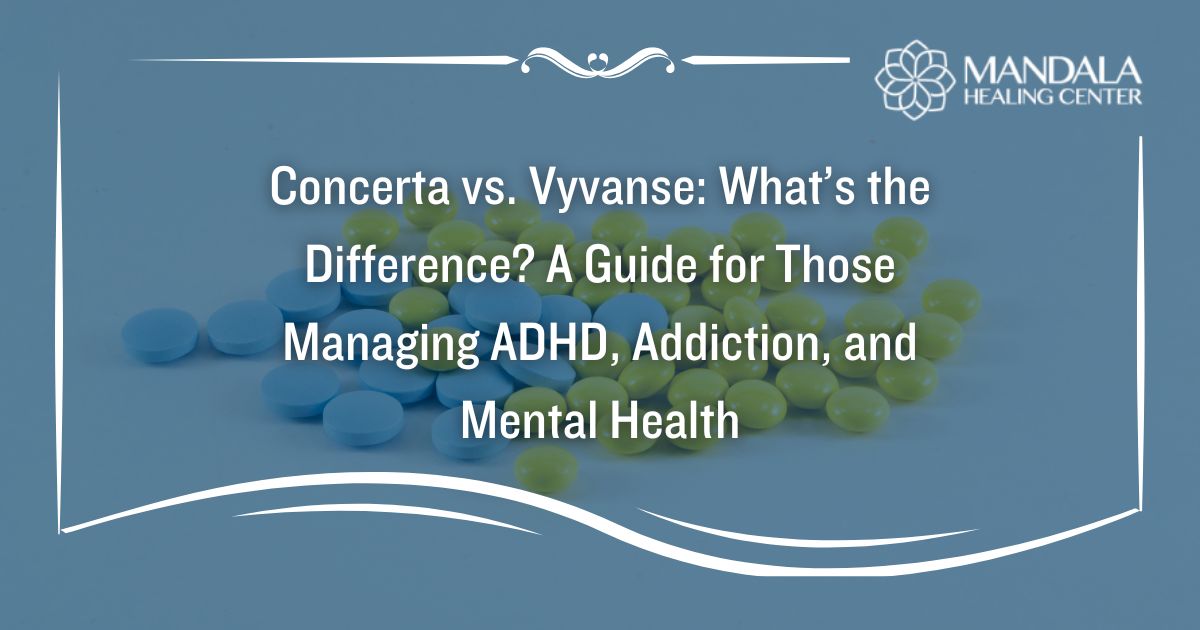Millions of people in the United States take prescription pain relievers after surgery, medical procedures, or to treat symptoms of chronic medical conditions. While many people believe all prescription medications are safe, many potent painkillers carry the risk of abuse, dependence, and addiction.
Tramadol and Percocet are commonly-prescribed pain relievers that have the potential for abuse and addiction. This guide will explore the similarities and differences between Tramadol and Percocet, including how to recognize the signs of abuse and seek treatment.
Reach out to the team at the Mandala Healing Center now to learn more about the risks of using tramadol vs. Percocet or to explore our holistic treatment programs.
What is Tramadol?
Tramadol is a controlled prescription medication used to help people manage moderate to severe pain. Tramadol is an opioid agonist that alters the brain’s perception of pain. Tramadol is available in tablet or capsule form and is also distributed under the brand name Ultram. Oral tablets are offered in immediate and extended-release forms.
How it works
Tramadol is an opioid agonist drug, meaning it binds to opioid receptors in the brain in a way that is similar to the way opioids do. Tramadol mimics the effects of endorphins, a neurotransmitter related to pain relief, pleasure, and reward. Tramadol binds to receptors in the brain that interrupt pain signals between the body and the brain. When a person takes tramadol, their brain is less “aware” of pain, which decreases their perception of pain.
Side effects
One of the most common side effects of tramadol is drowsiness. People who take tramadol must not drive or perform other potentially-dangerous activities while using it.
Other reported side effects of tramadol include:
- Itching
- Dry mouth
- Lethargy
- Fatigue
- Nausea and vomiting
- Constipation
- Headache
- Dizziness
- Sweating
Mild side effects are likely to disappear within days or weeks. People who experience severe or long-lasting side effects must tell their medical provider.
In some cases, people who take tramadol may experience more significant side effects that require immediate intervention. These include:
- Fast heart rate
- Elevated blood pressure
- Excessive body temperature
- Abnormally strong reflexes
- Loss of coordination
- Nausea and vomiting
- Agitation
- Hallucinations
- Coma
- Slow or shallow breathing
Some of tramadol’s severe side effects may be life-threatening. Call 911 immediately if you or someone near you has these or other complications.
Risks
There are several known risks associated with using tramadol, including:
- Misuse
- Addiction
- Life-threatening overdose
- Depressed breathing
- Accidental ingestion by children
- Interactions with other substances, including alcohol and other CNS depressants
People who take tramadol must follow their doctor’s instructions and watch out for signs of misuse, dependence, or addiction.
Tramadol dependence
People who take large or frequent doses of tramadol may develop a physical dependence on it. If a person who is dependent on tramadol suddenly stops taking it, they’re likely to experience uncomfortable withdrawal symptoms that may include:
- Irritability
- Insomnia
- Watery eyes
- Runny nose
- Excessive yawning
- Loss of appetite or nausea
- Sweating
- Chills
- Muscle aches
- Stomach cramps
- Diarrhea
If you take tramadol for any reason, you must be aware of signs of dependence and seek treatment as soon as you recognize a problem. Dependence can quickly turn into a life-threatening addiction.
What is Percocet?
Percocet is a medication that combines oxycodone and acetaminophen. Doctors may prescribe Percocet to help people manage pain not well-controlled by non-opioid drugs. Percocet is classified as a controlled substance because it has the risk of abuse, dependence, and addiction.
How it works
Oxycodone binds to opioid receptors in the brain, decreasing perceived pain. Acetaminophen prevents the production of specific brain chemicals, which can relieve pain.
Side effects
Like all prescription medications, Percocet can cause unwanted side effects. Some of the most common side effects of Percocet include:
- Nausea
- Vomiting
- Constipation
- Itching
- Headache
- Drowsiness
- Stomach pain
- Sweating
Most of these side effects will resolve as the body adapts to the medication.
Risks
Some of the most significant risks of using Percocet include:
- Depressed breathing
- Accidental overdose
- Allergic reactions, including dizziness, rash, hives, and shortness of breath
Getting help immediately is critical if you experience any of these side effects.
Percocet dependence
All opioid drugs have the potential for misuse and addiction. People who misuse Percocet may develop dependence and will likely experience withdrawal symptoms if they stop taking it.
Opioid withdrawal symptoms include:
- Anxiety
- Suicidal thoughts
- Restlessness
- Runny nose
- Chills
- Dilated pupils
- Mood swings
Anyone taking Percocet or other opioids must know the signs of dependence and seek treatment immediately.
Tramadol vs. Percocet: Exploring Similarities and Differences
Tramadol and Percocet are both prescription painkillers with the potential for abuse and addiction. Tramadol and Percocet work similarly in the brain, blocking pain messages by binding to opioid receptors. Percocet has an added pain-relieving ingredient–acetaminophen–that works differently to relieve pain.
Both tramadol and Percocet have the potential for addiction if people misuse them. Misusing these drugs includes:
- Taking higher or more frequent doses
- Taking the medication without a prescription
- Using the drug for longer than prescribed
- Using the drug differently than prescribed, such as crushing and snorting the tablets
Both tramadol and Percocet have the potential for overdose, and both have the potential to cause serious side effects. People who take tramadol or Percocet must use these drugs only under careful medical supervision. Those who develop dependence or addiction to either drug require comprehensive, holistic treatment and ongoing support to prevent relapse.
Differences Between Tramadol and Percocet
While tramadol and Percocet are similar, they also have their differences. One significant difference between tramadol and Percocet lies in how they interact with the body. Tramadol is an opioid painkiller, but it also affects serotonin and norepinephrine reuptake in the brain. This means that tramadol not only helps manage pain but also has an impact on certain neurotransmitters that regulate mood and emotions.
Tramadol’s effect on serotonin receptors can provide a mild antidepressant effect for individuals experiencing chronic pain and depression simultaneously. However, this also means that tramadol has the potential to interact with other medications that affect serotonin levels, leading to a risk of serotonin syndrome, a potentially life-threatening condition characterized by elevated serotonin levels.
Percocet, on the other hand, is a combination of oxycodone (an opioid) and acetaminophen (a pain reliever and fever reducer). Unlike tramadol, Percocet primarily affects opioid receptors for pain relief and doesn’t have the same direct impact on serotonin and norepinephrine reuptake. However, combining an opioid like oxycodone with acetaminophen poses its own risks, primarily related to potential liver damage due to the high doses of acetaminophen that can accumulate if the medication is not used as directed.
Additionally, while both tramadol and Percocet have the potential for abuse and addiction, there is some evidence suggesting that tramadol might have a comparatively lower risk of addiction. However, it’s important to note that any opioid medication can still be habit-forming, and individual responses can vary widely.
Find Treatment for Tramadol and Percocet Abuse
If you want to learn more about the similarities and differences between tramadol and Percocet or want to find substance abuse treatment, reach out to the Mandala Healing Center staff today. Our opioid addiction treatment programs are designed to empower people as they work to overcome substance abuse. Don’t wait for another day to pass you by. Get the help you need by contacting us today.
References:
- National Institutes of Health: Tramadol, Retrieved August 2023 from https://www.ncbi.nlm.nih.gov/books/NBK537060/
- Food and Drug Administration (FDA): Medication Guide Percocet, Retrieved August 2023 from https://www.accessdata.fda.gov/drugsatfda_docs/label/2018/040330s052lbl.pdf












